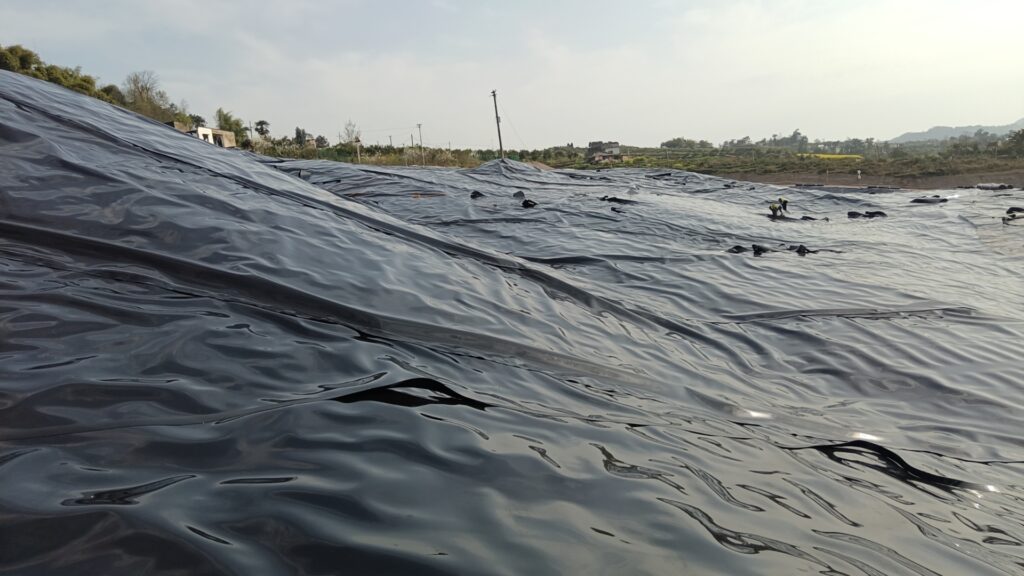How much does it cost to raise fish with geomembrane?
The cost of raising fish with geomembrane lining can vary depending on several factors such as the size of the fish farm, the type of fish being raised, the quality and thickness of the geomembrane material, location, labor costs, and additional infrastructure requirements like filtration systems, aeration systems, and pumps.
Geomembrane lining is often used in aquaculture to prevent water seepage and provide a controlled environment for fish farming. While it can involve higher upfront costs compared to traditional earthen ponds, it can offer long-term benefits such as improved water management, reduced water loss, and better disease control.
To get an accurate estimate of the cost, it’s essential to consider all these factors and possibly consult with experts or suppliers in your area who specialize in aquaculture and geomembrane installations. They can provide tailored cost estimates based on your specific requirements and site conditions.

How to install geomembrane for fish farming in the most economical way?
Installing geomembrane for fish farming in the most economical way involves careful planning, proper preparation, and efficient execution. Here are some steps to consider:
Site Selection and Preparation: Choose a suitable location for your fish farm, considering factors such as access to water sources, topography, soil conditions, and proximity to markets. Prepare the site by clearing vegetation, leveling the ground, and removing any sharp objects or debris that could puncture the geomembrane.
Geomembrane Selection: Select a geomembrane material that balances cost-effectiveness with durability and performance. Consider factors such as the type of fish being raised, environmental conditions, and expected lifespan of the installation.
Proper Sizing and Layout: Determine the appropriate size and shape of the geomembrane liner based on the dimensions of your fish farm. Minimize waste by carefully measuring and cutting the geomembrane to fit the contours of the pond or tank.
Installation Techniques: Use efficient installation techniques to minimize labor costs and ensure a proper seal. Methods such as panel welding, seam fusion, or adhesive bonding may be used depending on the geomembrane material and site conditions. Ensure that seams are securely bonded and tested for leaks.
Anchoring and Fixing: Anchor the geomembrane liner securely to prevent displacement or damage from wind, water currents, or animal activity. Use appropriate anchoring methods such as anchor trenches, ballast weights, or mechanical fasteners.
Integration with Other Components: Integrate the geomembrane liner with other components of the fish farming system, such as filtration systems, aeration systems, and water management infrastructure. Ensure proper alignment and sealing to prevent leaks or inefficiencies.
Regular Maintenance: Implement a regular maintenance schedule to monitor the geomembrane liner for signs of damage, wear, or deterioration. Promptly repair any leaks or tears to prevent water loss and maintain water quality.
By following these steps and optimizing each stage of the installation process, you can minimize costs while ensuring the effectiveness and longevity of the geomembrane liner for your fish farming operation. Additionally, consulting with experienced professionals or suppliers in the aquaculture industry can provide valuable insights and guidance on cost-saving measures and best practices for geomembrane installation.
Which geomembrane to choose for fish farming?
Choosing the right geomembrane for fish farming depends on various factors such as the type of fish being raised, the size and shape of the fish farm, environmental conditions, and budget considerations. Here are some common types of geomembranes used in aquaculture:
HDPE (High-Density Polyethylene): HDPE geomembranes are popular in fish farming due to their durability, flexibility, and resistance to UV degradation and punctures. They provide excellent long-term performance and are suitable for various applications, including lining fish ponds, reservoirs, and tanks.
LDPE (Low-Density Polyethylene): LDPE geomembranes are more flexible than HDPE and are often used in applications where conformability to uneven surfaces is required. They are suitable for smaller-scale fish farms or temporary installations.
PVC (Polyvinyl Chloride): PVC geomembranes are lightweight, flexible, and resistant to chemicals. They are commonly used in aquaculture for lining ponds and tanks, especially in areas with low temperatures.
EPDM (Ethylene Propylene Diene Monomer): EPDM geomembranes are known for their excellent flexibility and resistance to UV exposure and harsh weather conditions. While they are more expensive than some other geomembrane materials, they offer superior performance and longevity.
RPE (Reinforced Polyethylene): RPE geomembranes are reinforced with woven fabric or scrim, providing increased strength and puncture resistance. They are suitable for high-stress applications and can be used in larger fish farms or where additional durability is required.
When choosing a geomembrane for fish farming, it’s essential to consider factors such as durability, chemical resistance, UV stability, installation ease, and cost-effectiveness. Consulting with experienced professionals or suppliers in the aquaculture industry can help you select the most suitable geomembrane for your specific needs and requirements.

